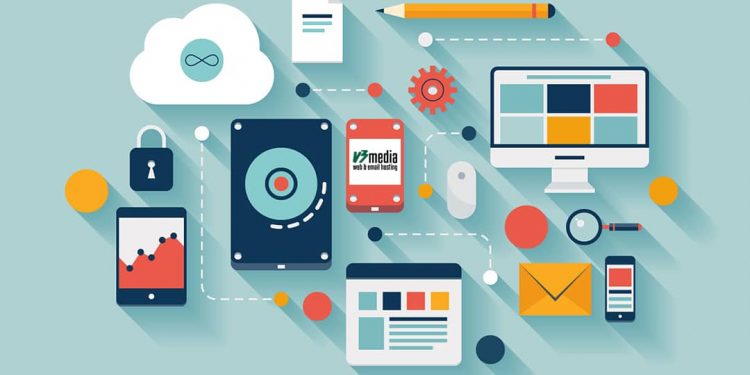Artificial Intelligence (AI) and Machine Learning (ML) are rapidly transforming the way websites are designed and content is created. These technologies have the power to revolutionize the way businesses and individuals interact with the digital world, making it more personalized, efficient, and cost-effective. Investing in websites and developing websites that incorporate AI and ML can give a competitive edge and help to drive more traffic, engagement, and conversions, thereby increasing the ROI.
In this article, we will explore the role of AI and ML in disrupting website design and content creation. We will also discuss the potential challenges and considerations that come with implementing these technologies, as well as their future developments and potential impacts. It’s essential for businesses and individuals to explore the potential of AI and ML in their website design and content creation efforts, to stay ahead of the competition and provide a better experience for their users. As the use of AI and ML becomes more widespread, they will become a key differentiator between websites that are successful and those that are not.
AI in Website Design
AI is being used in website design to create personalized website layouts and user interfaces that adapt to the needs and preferences of individual users. This is achieved through the use of algorithms that analyze data on user behavior and preferences, and then make adjustments to the website design accordingly. For example, an e-commerce website could use AI to recommend products to individual users based on their browsing history or purchase history.
The use of AI in website design has many benefits. One of the most significant benefits is increased user engagement. Personalized website layouts and user interfaces can make users feel more connected to the website and more likely to return. Additionally, AI can help improve conversion rates by making it easier for users to find the information and products they are looking for.
There are already a number of companies and platforms that are using AI in website design. Adobe Experience Cloud, for example, uses AI to automatically create personalized website layouts for individual users. Wix, a website builder platform, uses AI to create personalized website designs based on user preferences.
ML in Content Creation
ML is being used in content creation to generate personalized content and improve search engine optimization (SEO). By analyzing data on user behavior and preferences, ML algorithms can create content that is tailored to the needs and interests of individual users. This can include everything from product recommendations to personalized news articles.
The use of ML in content creation also has many benefits. One of the most significant benefits is increased efficiency. With ML, businesses and individuals can create high-quality content at a fraction of the time and cost it would take to create manually. Additionally, ML can help improve SEO by making it easier for users to find the website and its content.
There are already a number of companies and platforms that are using ML in content creation. Invesp, for example, uses ML to generate personalized product recommendations for e-commerce websites. Automated Insights, a company that specializes in natural language generation, uses ML to create personalized news articles and other types of content.
Challenges and Considerations
While the use of AI and ML in website design and content creation has many benefits, there are also potential challenges and considerations to keep in mind. One of the most significant challenges is the need for specialized expertise. In order to implement these technologies effectively, businesses and individuals will need to have access to the right people with the right skills and experience.
Another challenge is the ethical considerations of AI and ML, such as privacy concerns, bias, and discrimination. As these technologies are becoming more prevalent, it’s crucial that businesses and individuals are aware of the potential ethical implications, and take steps to mitigate them.
One potential solution to these challenges is the use of AI Content detection tools. These tools can detect content written by human, and prevent penalties from Google. They can detect plagiarism, grammar errors, and other issues, and help ensure that the website’s content is of high quality and complies with the guidelines set by Google.
Conclusion
In conclusion, AI and ML are rapidly transforming the way websites are designed and content is created. These technologies have the power to revolutionize the way businesses and individuals interact with the digital world, making it more personalized, efficient, and cost-effective. However, it is important to consider the potential challenges and considerations that come with implementing these technologies. Businesses and individuals should also be aware of the ethical implications of AI and ML, and take steps to mitigate them.
The use of AI in website design can increase user engagement and improve conversion rates, while the use of ML in content creation can increase efficiency and improve SEO. There are already a number of companies and platforms that are using AI and ML in website design and content creation, and this trend is likely to continue in the future.
It’s essential for businesses and individuals to explore the potential of AI and ML in their website design and content creation efforts, to stay ahead of the competition and provide a better experience for their users. As the use of AI and ML becomes more widespread, they will become a key differentiator between websites that are successful and those that are not.
In the future, we can expect to see AI and ML being used in even more advanced ways to improve the website design and content creation experience. As technology continues to evolve, we may see the development of even more sophisticated AI and ML algorithms, which will have the potential to revolutionize the way we interact with the digital world.
Follow Techdee for more!





